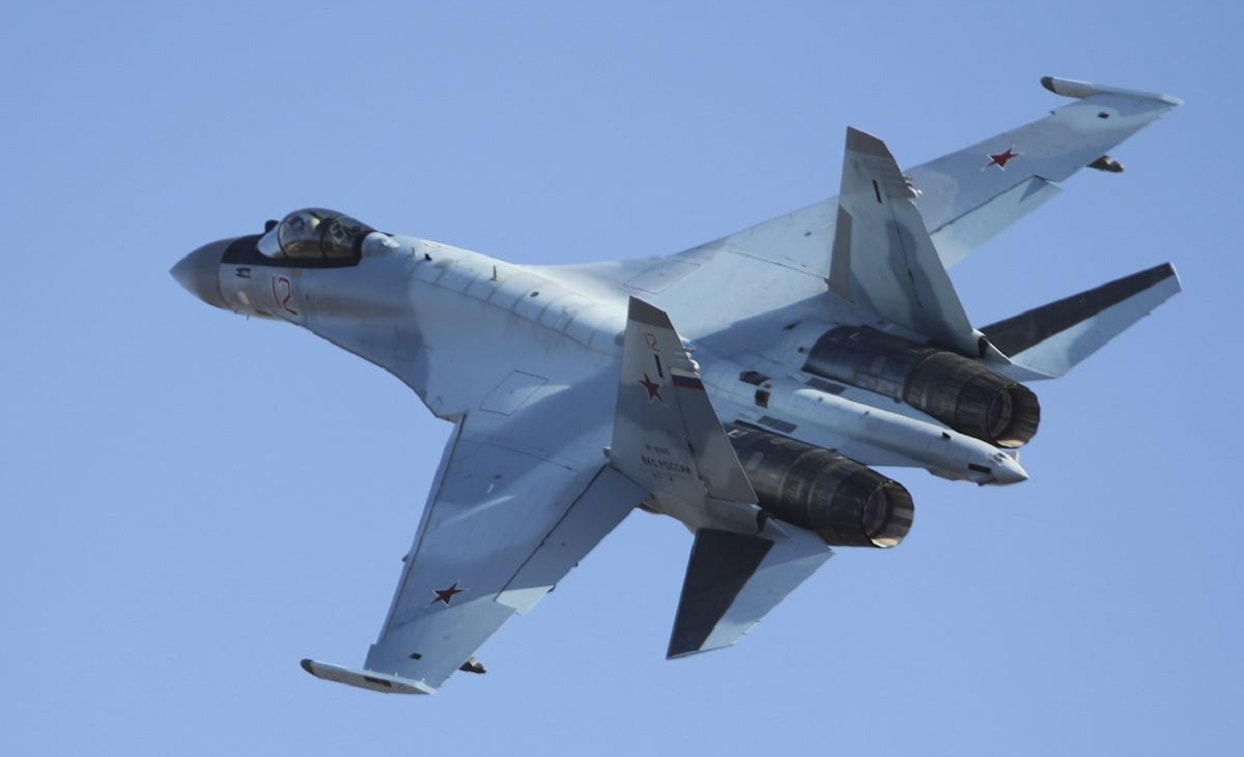Last week, Russian forces shot down one of their most advanced fighter jets.
On September 28, Russian air defenses shot down a Su-35S Flanker fighter jet in the vicinity of Tokmak, in southern Ukraine, and about 12 miles from the frontlines.
The blue-on-blue incident highlights the severe command-and-control problems that plague the Russian military and the Kremlin’s “special military operation” in Ukraine.
Blue-on-Blue Incident Over the Frontlines
Western intelligence estimates corroborate news and social media reports that Russian air defenses shot down one of their own.
“On 28 September 2023, Russian air defence forces highly likely shot down one of their own Su-35S FLANKER M multi-role combat jets over Tokmak, approximately 20km behind the current front line,” the British Military Intelligence assessed in its latest estimate of the war.
This is likely the fifth Su-35S that gets destroyed in the war. The aircraft is the most advanced fighter jet in widespread service with the Russian Aerospace Forces.
Although the Kremlin has been working on a fifth-generation stealth fighter jet (the Su-57 Felon), there are too few aircraft flying, and there is serious doubt about its advanced capabilities.
The incident took place very close to one of the most key parts of the contact line.
“The location is relevant because Tokmak is a heavily fortified town which often hosts Russian headquarters commanding one of the most intensely contested sectors of the front line,” the British Military Intelligence stated.
“These headquarters would typically be protected with dedicated short and medium range air defence systems. These are almost certainly held at very high readiness, as Ukraine continues to conduct effective deep strikes against such locations,” the British Military Intelligence added.
According to Western intelligence estimates, the Russian Aerospace Forces have lost around 90 fixed-wing aircraft since the start of the war. The Ukrainians, however, claim different numbers.
Per the Ukrainian Ministry of Defense, the Russian military has lost more than 300 fighter, attack, transport, and bomber fixed-wing aircraft, as well as more than 300 attack and transport helicopters.
The Russian Aerospace Forces in Ukraine
When the Kremlin launched the full-scale invasion of Ukraine on February 24, 2022, the Russian Aerospace Forces was regarded as a capable air force that could present a threat to NATO. After more than 19 months in Ukraine, that assessment is no longer accurate.
The conflict in Ukraine has laid bare the weaknesses of the Russian Aerospace Forces; namely, an inability to reliably conduct and coordinate large-scale operations with several aircraft at the same time, as well as an extremely poor targeting cycle that restricts Russian aircraft from striking mainly stationary targets.
Conversely, the U.S. Air Force has coordinated campaigns—wars in Iraq, for example—with hundreds of aircraft on the air at the same time without any issue at all.
Besides failing to achieve the strategic and political objectives of Russian President Vladimir Putin, the campaign in Ukraine has revealed that the conventional capabilities of the Russian military don’t come close to that of the U.S. and, as a result, there is no conventional near-peer threat coming out of Russia.
A 19FortyFive Defense and National Security Columnist, Stavros Atlamazoglou is a seasoned defense journalist specializing in special operations and a Hellenic Army veteran (national service with the 575th Marine Battalion and Army HQ). He holds a BA from the Johns Hopkins University, an MA from the Johns Hopkins’ School of Advanced International Studies (SAIS), and is pursuing a J.D. at Boston College Law School. His work has been featured in Business Insider, Sandboxx, and SOFREP.
From the Vault
‘Vacuum Bombs Destroyed’: Ukraine Footage Shows Putin’s Thermobaric Rockets Destroyed
BOOM! Ukraine Video Shows Precision Strike on Russian Air-Defense System

